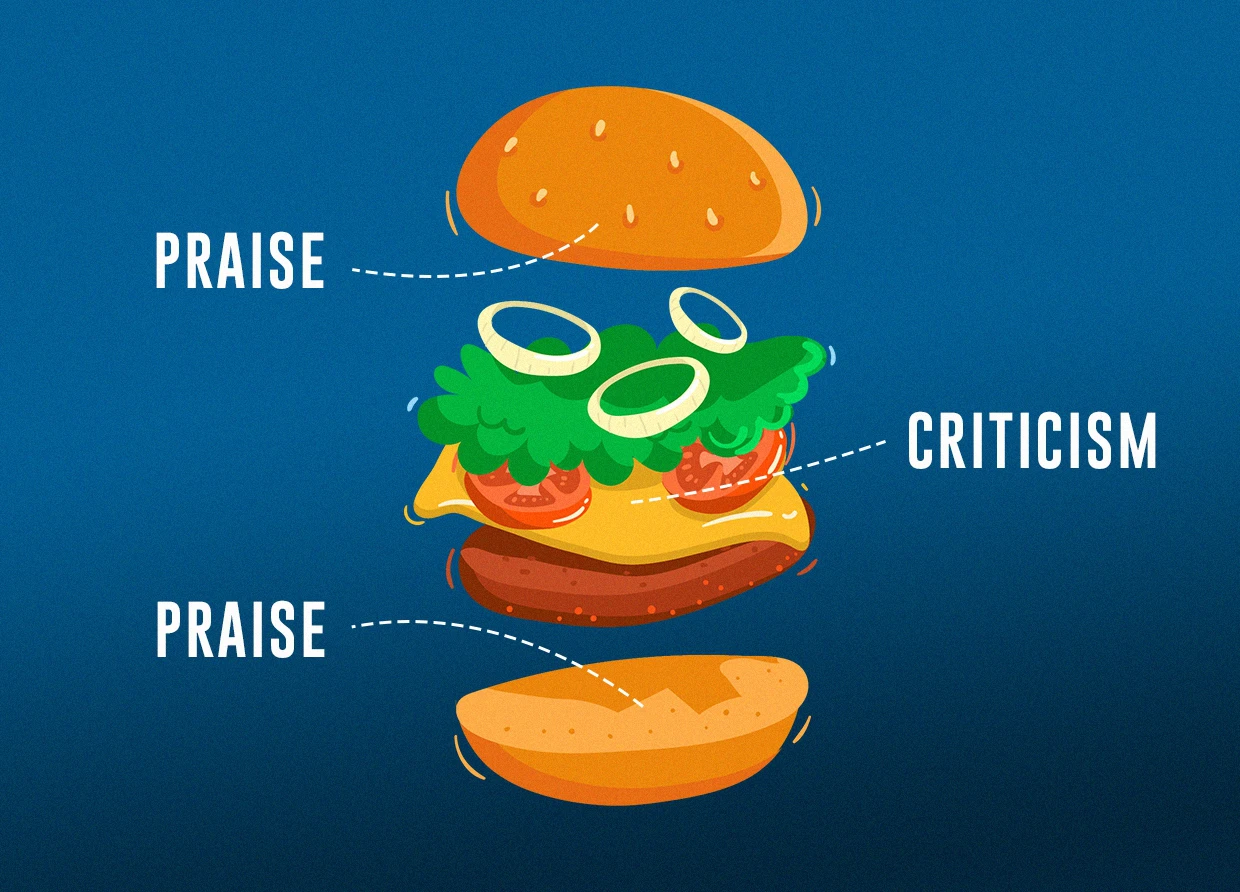SANDWICH TECHNIQUE: GIVING FEEDBACK IN PLEASANT WAY
Here are some ways of giving feedback that prologues with compliments before.

The sandwich technique is a way of giving feedback that prologues with compliments before. Compliments act as a patty, while beef and cheese act as what we want to say actually. This refers to what attitudes or performance that we want to change or develop better for our employees. After giving their beef and cheese, give them praise again to calm the situation.
This technique aims to make ‘a mild feel’ for discussion and relax the severity of the negative criticism. The employee who is criticized in this way should become easy to accept and be able to leave the room with a good feeling.

Employees are often even loss of their motivation after hearing it. It is precisely this effect that managers should avoid, and with the so-called “sandwich method”, it could be.
When is the best time to use the sandwich technique?
Judith Orloff, M.D., The Empath's Survival Guide wrote in Psychology Today when we want to use the Sandwich Technique, make a sentence that is not like the demands. Then, when we communicate about a hard issue, you sandwich the request between two positive statements. It’s a creative way of presenting challenging topics so that others can hear you. Let’s say you need more alone time. First, you could say, “I appreciate all your support and I need your help with this.” Then place your request: “It would be great I can take more alone time to decompress. This will help me be even more present with you later.”

You empower your relationships by expressing your needs. Also, relationships thrive on both people feeling accepted. One patient told me, “My husband accepts me as I am. Through his acceptance I have learned to be true to myself.”
We all have issues to resolve in relationships, no matter how good the match. To do this, we need to have loving, creative conversations.
Some real situations that enable to use of the sandwich technique
But remember, not all situations match when you apply the sandwich technique. We suggest you do it in this situation.
Straightforward
Using a feedback sandwich flies in the face of recommendations about providing effective, meaningful employee feedback that is less than positive. The best approach recommended to performance improvement feedback is to provide straightforward, to the point, descriptive communication with examples of what the employee needs to improve.
Do it at a regular meeting.
When an employee is scheduled for a meeting, even if it is a regular meeting, they anticipate that some feedback will be constructive. Sure, the employee doesn’t like constructive feedback as much as positive feedback, but the meeting met their expectations. The employee does not feel deceived or fooled. If the employee can expect honest, straightforward feedback from you, the employee will trust you. Beating around the bush is perceived as prevarication.
Avoid “and” or “but”
If you provide feedback in a sandwich, the employee forgets what you said about their positive performance when using terms such as "and" or "but" to transition to the perceived negative feedback. The employee loses the positive first interaction when they experience follow-up constructive feedback. Hence, you lose the supposed advantage of offering positive feedback first.



























